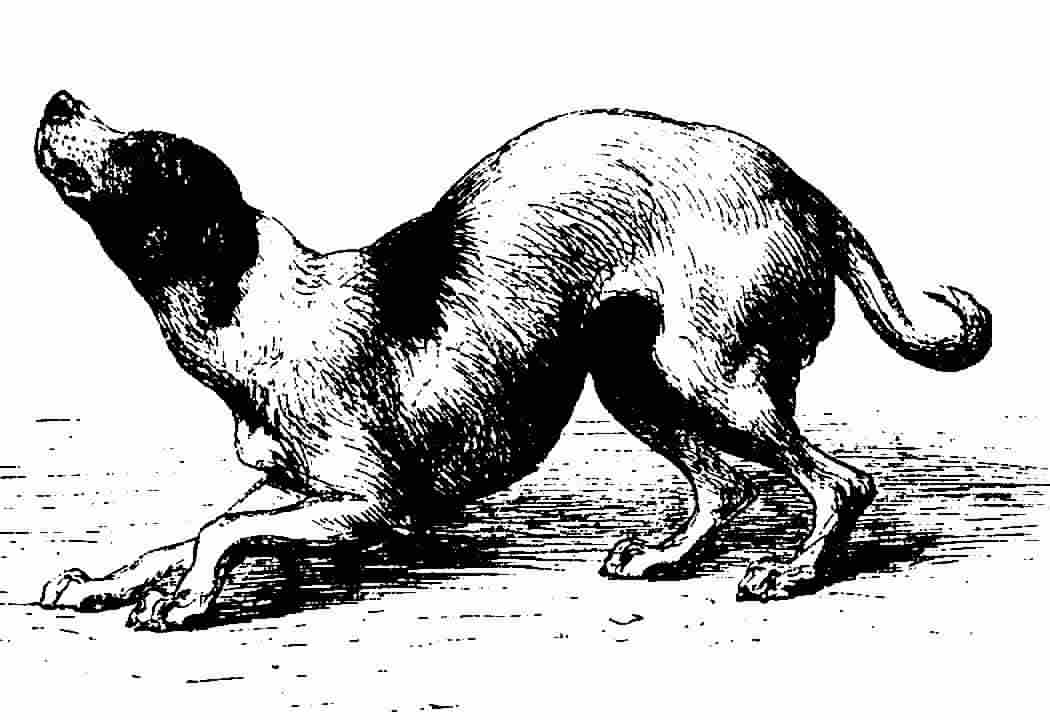CROUCH

Primeval posture. An originally protective
body position, of great age, in which the limbs bend and the spinal column
flexes forward, to press the arms, legs, and torso close to the ground (as in
cowering).
Usage: Paleocircuits of the crouch posture underlie many gestures used today (see, e.g., BOW, HEAD-TILT-SIDE, and SHOULDER-SHRUG) to express a servile, submissive, or timid attitude, feeling, or mood.
RESEARCH REPORTS: 1. In the dog: "Instead of walking upright, the body sinks downwards or even crouches, and is thrown into flexuous movements; his tail, instead of being held stiff and upright, is lowered and wagged from side to side; his hair instantly becomes smooth; his ears are depressed and drawn backwards, but not closely to the head; and his lips hang loosely" (Darwin 1872:56). 2. Crouching has been observed in subordinate bonnet macaques (Rahaman and Parthasarathy 1968). 3. Motherless rhesus monkeys crouched and "showed symptoms similar to disturbed mental patients" (Pugh 1977:200).
Paleontology I. The vertebrate crouch display is formed of ancient bending motions designed to remove animals from danger. A reflexive act, controlled by the spinal cord, bending the body moves it away from hazards, reduces its exposed surface area, and makes it look "smaller." Nonverbally, flexed body movements used to crouch lower to the ground predate extension movements used to rise or lift above the terrestrial surface (see, e.g., HIGH-STAND DISPLAY); thus, our remote ancestors crouched before they stood tall.
Paleontology II. Crouching can be traced to an avoider's response, which is tactile in origin rather than visual, as in the high-stand display. So primitive is the crouch posture's flexor reflex that it exists even in immature fish and amphibian larvae. Stimulating the skin of these simple creatures leads to side-to-side bending movements, which, in a watery world, remove them from dangers signaled by the touch.
Neuro-notes. The crouch is keyed to paleocircuits formed of primitive, spinal-cord interneurons in charge of tactile withdrawal. Similar "tap withdrawal" movements have been observed in spineless animals, such as the nematode worm. Working through pools of interneurons controlling the muscular stretch reflex, the worm's body, like ours, automatically bends away from danger.
Antonym: ANTIGRAVITY SIGN. See also PALM-UP.
Copyright 1997 -
2020 (David B. Givens/Center for
Nonverbal Studies)
Drawing from Darwin 1872 (copyright 1998 by
Oxford University Press)